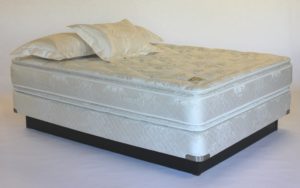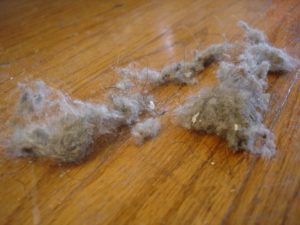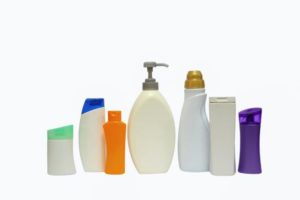 The evidence is growing. Another recent study found that exposure to dirt and animals in the first year of life is beneficial for development of a a rich and diverse gut microbiome - that is, for greater species "richness" as well as more beneficial microbes. This is linked to lower levels of allergies and asthma in children.
The evidence is growing. Another recent study found that exposure to dirt and animals in the first year of life is beneficial for development of a a rich and diverse gut microbiome - that is, for greater species "richness" as well as more beneficial microbes. This is linked to lower levels of allergies and asthma in children.
So don't worry about children being exposed to animal "germs" and getting dirty! Instead, consider the microbes as having health benefits, such as developing a "robust immune system". In summary, it now appears that in the first year of life the immune system needs lots of exposure to all sorts of microbes (e.g. from pets, animals, dirt) to "train it" to develop normally.
The Ohio State University researchers compared 5 healthy rural Amish infants to 5 healthy non-Amish urban infants in Ohio, also found that all of the rural (Amish) children were breastfed, while 2 of the urban (non-Amish) children were only formula fed (some microbial differences there). The Amish households had farm animals (cattle, sheep, and/or horses) and pets (dogs and/or cats), while the non-Amish households had no contact with livestock, but did have a pet dog or cat. Just like in other studies, one pet doesn't seem to be enough - even more animal exposure in early childhood is best for the gut microbiome. [One study found a dose-dependent effect with exposure to 5 furry pets in early childhood was needed to prevent all allergies.]
Studies find that rural (Amish) children have a low incidence of allergies and asthma, while urban children have a high incidence of allergies and asthma. In this study, an example of microbial differences in the 2 groups of children was that Bifidobacterium bacteria were "enriched" in non-Amish (urban) infants, while Roseburia species were "enriched" in Amish (rural, farm-raised) infants. Similar gut microbe differences have been observed in other studies comparing rural and urban children, and both dietary differences (e.g. farm raised children eat lots of homegrown produce) and environmental differences (animal exposure) are thought to be responsible for the differences.
From Science Daily: Keeping livestock in the yard just might help your baby's immune system ...continue reading "Children, Animals, and Gut Microbes"

 Once again research is finding effects on health from nanoparticles and air pollution - this time the heart. Tiny air pollution particles less than 100 nm (nanometers) in size are typically called "ultrafine particles", but actually they are so small that they are nanoparticles.
Once again research is finding effects on health from nanoparticles and air pollution - this time the heart. Tiny air pollution particles less than 100 nm (nanometers) in size are typically called "ultrafine particles", but actually they are so small that they are nanoparticles. We tend to think of our beds as a refuge from the outside world, where one can safely relax and sleep. Well... not quite. A recent
We tend to think of our beds as a refuge from the outside world, where one can safely relax and sleep. Well... not quite. A recent  Want to prevent your children from having allergies or asthma? A recent study adds support to increasing evidence that growing up on
Want to prevent your children from having allergies or asthma? A recent study adds support to increasing evidence that growing up on  Did you know that over 90% of all Americans have pesticide residues in their bodies? How do we know this? From studies and from the
Did you know that over 90% of all Americans have pesticide residues in their bodies? How do we know this? From studies and from the  Study after study is finding that having pets in early childhood or living on a farm with lots of exposure to animals is associated with a lower incidence of allergies. Pets with all their "germs" (bacteria and other microbes) appear to have beneficial effects on children's developing immune systems. One
Study after study is finding that having pets in early childhood or living on a farm with lots of exposure to animals is associated with a lower incidence of allergies. Pets with all their "germs" (bacteria and other microbes) appear to have beneficial effects on children's developing immune systems. One  Two years ago
Two years ago  Many of us have concerns over the fact that people are constantly exposed to endocrine disruptors (chemicals that disrupt hormonal systems) in many common household and personal products. Even the vinyl flooring found in many homes contains phthalates, which are endocrine disrupting chemicals.
Many of us have concerns over the fact that people are constantly exposed to endocrine disruptors (chemicals that disrupt hormonal systems) in many common household and personal products. Even the vinyl flooring found in many homes contains phthalates, which are endocrine disrupting chemicals. Today's topic: BIRTH. Two recent studies have results that question some current medical practices, which are when to cut the umbilical cord, and hospital vs home birth differences in the baby's gut microbes.
Today's topic: BIRTH. Two recent studies have results that question some current medical practices, which are when to cut the umbilical cord, and hospital vs home birth differences in the baby's gut microbes. The following is a really nice article about endocrine disruptors (chemicals that can interfere with the body's hormonal system). Journalist Hillary Brueck writes about where they are found (all around us!), some of the many negative health effects, and about NYU physician and researcher
The following is a really nice article about endocrine disruptors (chemicals that can interfere with the body's hormonal system). Journalist Hillary Brueck writes about where they are found (all around us!), some of the many negative health effects, and about NYU physician and researcher